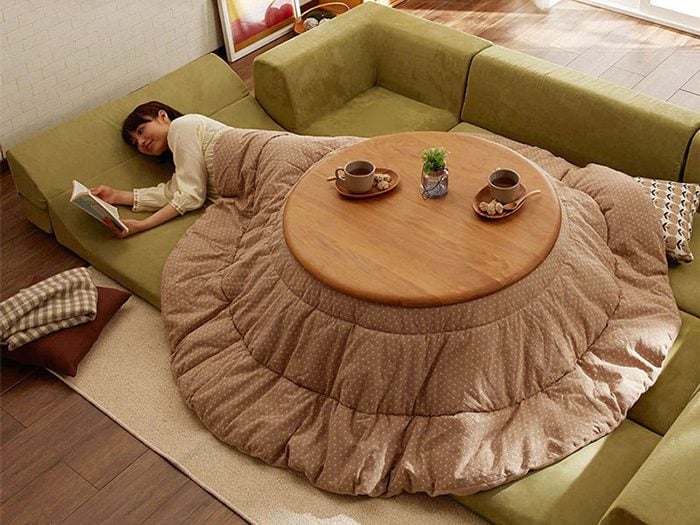
If you want to work in Japan, that means you have to live in Japan, which means you’re going to have to live through the winter.
Since you’re here on JobsinJapan.com, my guess is that you’ve done some research on what it’s like to live in Japan. And if you’ve done that, I’m assuming you’ve heard that Japanese winters are cold.
In my opinion Japan’s lack of insulation and central air conditioning are actually more to blame than the temperature, but complaining about how Japanese houses are made is a different article. It’s going to be cold no matter what you do, but you can be more prepared and make it a significantly less painful experience if you’re prepared.
Here’s how.
In my view there are three main ways to attack the winter:
- Heaters
- Kotatsu
- Underwear
This article is going to be a deep dive each of the above, along with some personal recommendations from myself and what I’ve learned from my 10 winters in Japan.
Heaters
There are 3 main ways to heat space indoors in Japan: wall air conditioning (AC), kerosene/gas space heaters and electric space heaters.
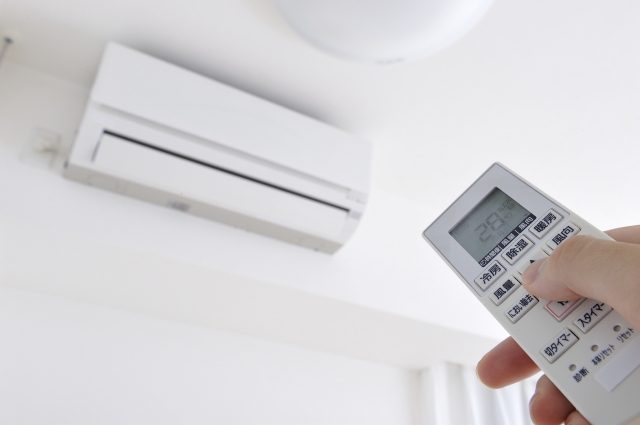
In terms of effectiveness, wall A/C units are tough to beat. They push the most air and heat the largest area, but they also cost more than the other options. If units are not installed at your place already, these will also require installation, which is usually not free (about 10,000yen).
These are usually categorized by amount of area they heat, in 畳(jou), or size of a room, measure by the number of tatami mats it would take to cover the floor. A small one (6畳, or around 20 feet) will put you back around 50,000 yen, and larger models can cost much more. Since they are the most expensive to run, you don’t want to keep these on 24/7, but if you need to heat a large area in a short amount of time, costs be damned, this is the way to go.
Protip: If you decide to employ a wall AC, be sure to use a humidifier along with it; these things really do dry out the air. When I first got to Japan and was using a wall heater religiously for the first time in my life, I would wake up with a sore throat every day and have no idea why. I later learned it was because of the dryness caused by my heater. Don’t be stupid like me.

Kerosene heaters are smaller portable solutions that can be placed wherever you need them. For small rooms, these are more efficient and cheaper than the wall AC units, but they need to be fueled with kerosene or gas on the regular. In addition to that, you have to occasionally crack a window due to the exhaust fumes that these expel. If you don’t do this, you can be in big trouble really fast.
In terms of upkeep, kerosene heaters are much cheaper than a wall AC unit, but you’ll need to get the kerosene refilled from time to time. The 18-liter cans cost about 1,100 yen and will last you a few months with normal usage. Smaller kerosene heaters will put you back about 9,000 yen, and larger heaters with more functions and more heating space can get as high as 50,000 yen.

Finally, electric space heaters work pretty much the same as kerosene heaters but instead of kerosene, they need to be plugged in to the wall. In my experience, these are always less powerful than kerosene and put a bigger hit on your energy bill. However, if you have a small room, these are more than enough. Small heaters can be as cheap as 2,000 yen, but they will only heat an extremely small area (think under a desk). The cost for an average sized heater is about 6,000 yen.
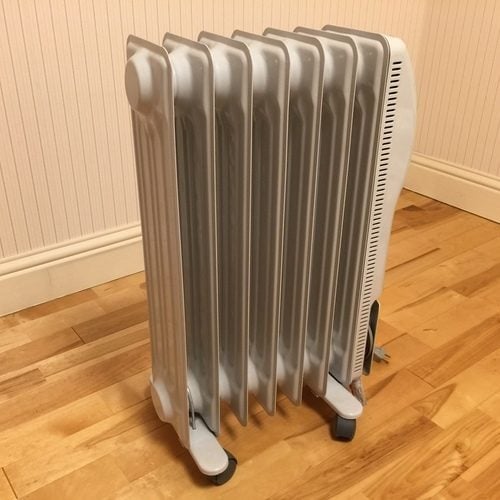
Oil heaters also fall in this category, as they use electricity to heat up internal oil that then heats up the air around it. These are a bit stronger than the other types of electric space heaters (once they are fully warmed up, which takes a while), but do warm more air. Naturally, they are a bit more expensive to run.
Kotatsu
Kotatsu are tables with a heater attached to the underside. To contain the heat it produces, a blanket is placed over the kotatsu and then you sit under it. Sounds simple, but these devices are a god-tier heating solution.
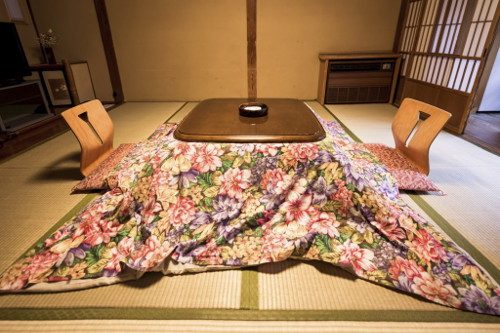
The good part about kotatsu is that they envelope you in a warm blanket of the heat of heaven. The bad part is that you have to be sitting under them to feel their amazing heating powers. This is great if you’re binge-watching Terrace House, but less useful when you have to go the bathroom.
Like wall A/C units and electric space heaters, these are powered by electricity, and using them every day will result in a larger electricity bill at the end of the month. In my experience they affect things way less than a wall A/C but more than an electric space heater. As always, different models may vary in how the numbers shake out for you.
In terms of price, a decent kotatsu with blanket will put you back about 10,000 yen. Models that are made for two or more people are also available, but they will obviously cost more. If you live by yourself a single will be perfect, and you will spend most of your waking hours in your place under them.
Underwear
Unfortunately, you can’t stay inside ALL day.. No number of incredible heat solutions in your own home can save you from what waits for you once you leave your front door.
The best solution I’ve found for those times, besides the obvious solutions like getting a nice coat and layering, is top-notch underwear. More specifically, HEATTECH from Uniqlo.
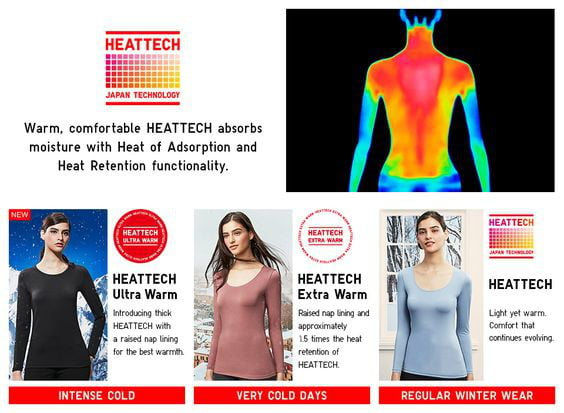
This is not a sponsored post, but I cannot recommend a product more whole-heartedly than this.
Buying 5 pairs of long-sleeved shirts and the tights will put you back about 10,000 yen, but it is 100% worth it.
My winter wardrobe consists of HEATTECH, and then everything I put on top of it.
Protip: One of the worst parts about winter is getting dressed in the morning, as you have to expose your skin to the frigid air. What I do to avoid this is after taking a nice steamy bath in the evening, I dry off and put on my PJs as normal, with HEATTECH underwear of course. That way when you get up in the morning, you don’t have to get totally naked because the warm caress of Uniglo is keeping your buns away from the cold air. You’re welcome.
I didn’t mention a few of the other smaller solutions that like wearing layers, taking hot baths, stuffing heatpacks in your shorts, insulating windows and eating hot foods, but those are merely pawns in your war against the winter. Important, but your main weapons will be a combination of the three mentioned above.
As for you, your ideal winter heat solution will depend on your living situation (besides the underwear; EVERYONE needs the underwear). For a small place, a kerosene or electric heater used alongside a kotatsu is perfect. The bigger the place, the more you’ll need to invest in your warmth.
Japan has so many amazing things, but the cold winters and how housing is set up to deal with them is not one of them. It is coming, and the more prepared you are for it, the less painful it will be.
Winter is Coming. Seven Blessings to you.
(Image:HBO)



















